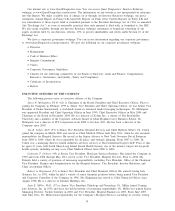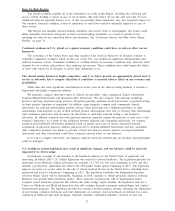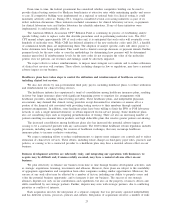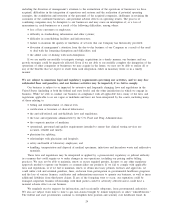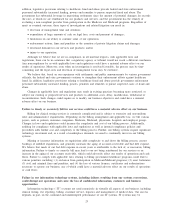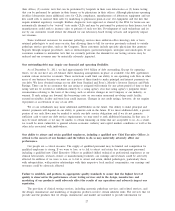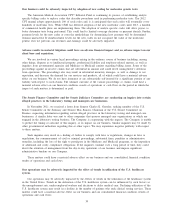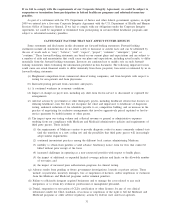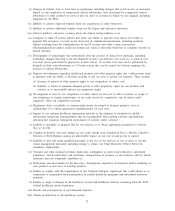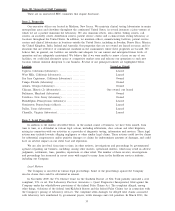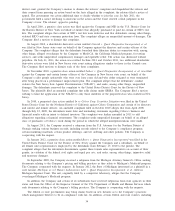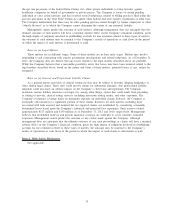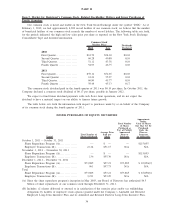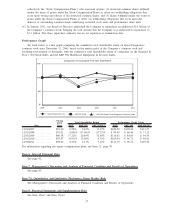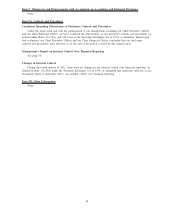Quest Diagnostics 2011 Annual Report Download - page 34
Download and view the complete annual report
Please find page 34 of the 2011 Quest Diagnostics annual report below. You can navigate through the pages in the report by either clicking on the pages listed below, or by using the keyword search tool below to find specific information within the annual report.healthcare providers in providing patient care. Therefore, users of our services and products may have a greater
sensitivity to errors than the users of services or products that are intended for other purposes.
Manufacturing or design defects, unanticipated use of our products, or inadequate disclosure of risks relating
to the use of the products can lead to injury or other adverse events. These events could lead to recalls or safety
alerts relating to our products (either voluntary or required by governmental authorities) and could result, in
certain cases, in the removal of a product from the market. Any recall could result in significant costs as well as
negative publicity that could reduce demand for our products. Personal injuries relating to the use of our products
can also result in product liability claims being brought against us. In some circumstances, such adverse events
could also cause delays in new product approvals.
Similarly, negligence in performing our services can lead to injury or other adverse events. We may be sued
under physician liability or other liability law for acts or omissions by our pathologists, laboratory personnel and
hospital employees who are under the supervision of our hospital-based pathologists. We are subject to the
attendant risk of substantial damages awards and risk to our reputation.
The failure of our IT systems to keep pace with technological advances may significantly reduce our
revenues or increase our expenses.
Public and private initiatives to create healthcare information technology (“HCIT”) standards and to mandate
standardized clinical coding systems for the electronic exchange of clinical information, including test orders and
test results, could require costly modifications to our existing HCIT systems. While we do not expect HCIT
standards to be adopted or implemented without adequate time to comply, if we fail to adopt or delay in
implementing HCIT standards, we could lose customers and business opportunities.
Our operations and reputation may be impaired if we do not comply with privacy laws or information
security policies.
In our business, we generate or maintain sensitive information, such as patient data or personal information.
If we do not adequately safeguard that information and it were to become available to persons or entities that
should not have access to it, our business could be impaired, our reputation could suffer and we could be subject
to fines, penalties and litigation.
We are subject to numerous political, legal, operational and other risks as a result of our international
operations which could impact our business in many ways.
Although we conduct most of our business in the United States, our international operations increase our
exposure to the inherent risks of doing business in international markets. Depending on the market, these risks
include, without limitation:
•changes in the local economic environment;
•political instability;
•social changes;
•intellectual property legal protections and remedies;
•trade regulations;
•procedures and actions affecting approval, production, pricing, reimbursement and marketing of products
and services;
•exchange controls;
•export controls;
•weak legal systems which may affect our ability to enforce contractual rights;
•changes in local laws or regulations; and
•potentially longer payment and collection cycles.
International operations also require us to devote significant management resources to implement our controls
and systems in new markets, to comply with the U.S. Foreign Corrupt Practices Act and similar anti-corruption
laws in non-U.S. jurisdictions and to overcome challenges based on differing languages and cultures.
If we do not successfully navigate these risks, our financial condition or results of operations could be
materially adversely affected.
28



